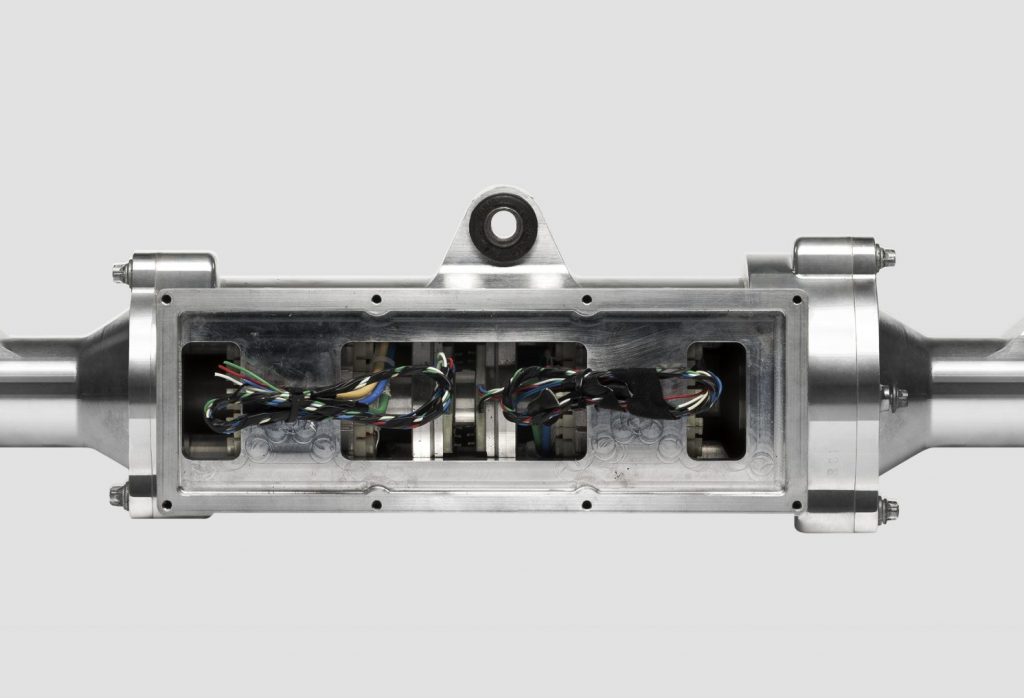Our ground-breaking CS1 steering actuator is designed from the ground-up specifically for use in autonomously driven vehicles. The CS1 employs a unique mechanical, electrical and software architecture to ensure continued steering system capability even in the event of a single point of failure (sensor, power, communication or other fault). The system ensures that the vehicle can always maintain directional control and that the primary safety goal is met, exceeding the requirements for ASIL-D, in accordance with the automotive functional safety standard ISO 26262.
CS1 comprises an advanced duplex architecture with dual controllers, an array of sensors and twin sub-actuators to create the axial load to steer the vehicle. During normal operation, the steering load is split between the two sub-actuators, however, in the event of a vehicle or system fault, the impacted sub-actuator fails silent and the remaining sub-actuator takes over full control.
The advanced control software self-diagnoses faults and reverts to the alternative operating mode within a defined FTTI (fault-tolerant time interval) to maintain normal steering function. CS1 is therefore the world’s first fail-operational steering system. The vehicle can continue to operate normally regardless of a single point failure occurring within the system or at the vehicle level.
The system has been developed by automotive industry experts from steering, braking, functional safety, systems engineering and electronics backgrounds. It is a unique concept (with several pending patents) designed specifically for use in autonomously driven vehicles. Traditional rack and pinion; and parallel axis, belt driven technologies are eliminated in this ground-up design.



With the deployment of our class-leading steer-by-wire system in vehicles with SAE level 3 capability, the driving experience is optimised with total safety and usability in mind. The system is a ground-up design that is fault tolerant and fail-operational, meaning that autonomous vehicles fitted with the system can continue to steer, even in the event of a fault.
Installed into a vehicle with L3 autonomy, a steer-by-wire system offers space and weight reduction, greater accessibility for disabled users, and even the option for dynamic steering ratios.

In vehicles with SAE level 4 or 5 autonomy, our steer-by-wire system will be important in ensuring total safety for passengers, with the means for human actuation removed. By adding a secondary system for redundant actuation in steering, we bring aircraft levels of safety down to the ground.
We design from the ground-up, which means we are free to delete legacy concepts such as the 16th century rack-and-pinion. In the context of L4 and L5 autonomy, this freedom is particularly rewarding. It affords more room for innovation, innovation that will ensure the new era of mobility is safe, sustainable and efficient.
Chassis Autonomy SBA AB
Trollhättan, Sweden
Chassis Autonomy Limited
London, United Kingdom
Privacy Policy | Cookie Policy | © Copyright Chassis Autonomy SBA AB | All Rights Reserved
Chassis Autonomy and the CA logo device are registered trademarks of Chassis Autonomy SBA AB, Sweden, 2023